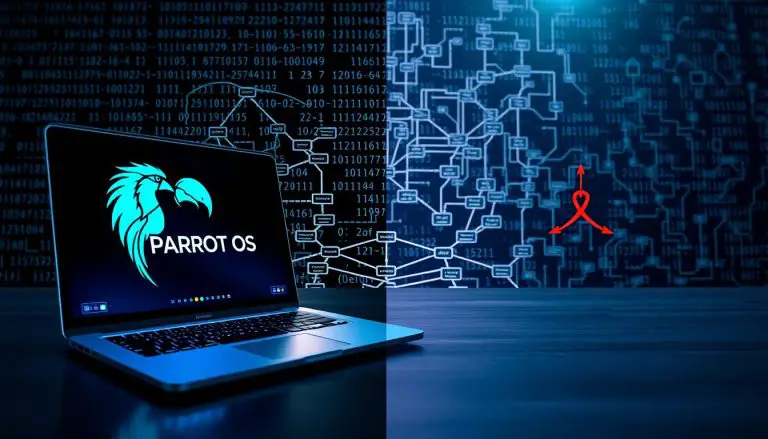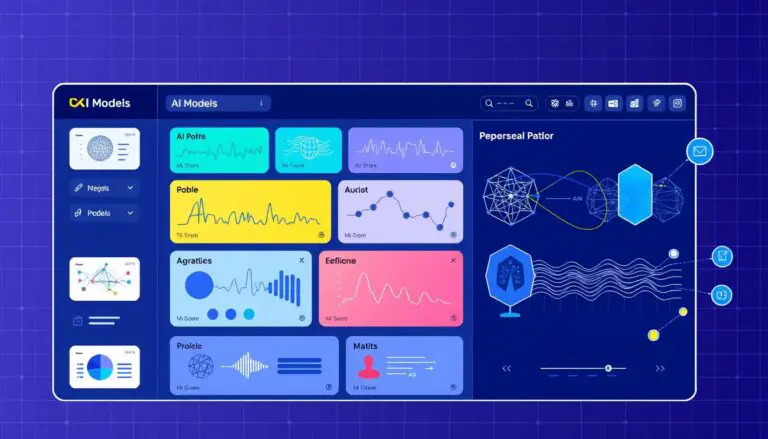Best LLM for Coding: Our Expert Picks and Analysis
Choosing the right intelligent tool for software creation is no longer a simple task. The landscape of large language models has exploded, offering a dizzying array of options. We believe selecting the most effective one has become a critical decision for modern software engineering.
These powerful assistants have evolved far beyond suggesting the next line. Today, they can debug complex issues, refactor entire codebases, and generate detailed documentation. They even help with high-level system design and translating between programming languages.
In this analysis, we provide a comprehensive look at the current market. We examine leading commercial offerings from giants like OpenAI, Anthropic, and Google. We also evaluate competitive open-source alternatives that provide transparency and cost control, which can be crucial when integrating with tools like IntelliJ IDEA.
Our recommendations are built on a robust methodology. We combine quantitative benchmark results with real-world performance testing. We also incorporate qualitative feedback from active developer communities to ensure our insights are practical and actionable.
By the end of this guide, you will understand which models excel at specific programming tasks. You will learn how to balance raw performance with operational costs. We will also explore strategies for implementing a multi-model approach within professional workflows.
Key Takeaways
- Selecting the right AI model is crucial for modern software development efficiency.
- Modern programming assistants handle complex tasks like debugging and refactoring, not just code completion.
- This analysis covers both leading commercial models and powerful open-source alternatives.
- Our evaluation combines hard data, real-world testing, and community feedback.
- You will learn to match specific models to particular tasks and balance performance with cost.
- Strategies for using multiple models together in a professional environment will be discussed.
Introduction to the Evolving Landscape of Coding LLMs
Artificial intelligence has fundamentally reshaped how developers approach software creation and problem-solving. These advanced tools now handle complex tasks that previously required extensive human expertise.
Understanding the Role of LLMs in Modern Development
Large language models have transformed from basic autocomplete tools into sophisticated partners. They now manage complex architectural decisions and multi-file refactoring operations.
Developers experience significant productivity gains when AI handles boilerplate code generation. This allows human programmers to focus on unique business problems and creative solutions.
The Rising Importance of Advanced Code Generation
The competitive marketplace now features models specialized for specific programming tasks and languages. This specialization drives innovation in development workflows.
However, rapid integration introduces challenges around code quality and security. Recent studies show a correlation between widespread adoption and decreased stability in software releases.
The phenomenon of automation bias poses significant risks. Over-reliance on AI-generated code without proper debugging can introduce vulnerabilities.
Understanding these capabilities and limitations is essential for modern development teams. This knowledge provides context for the detailed model comparisons in subsequent sections.
Evaluation Criteria for Coding LLMs
Measuring effectiveness requires multiple perspectives that capture both technical metrics and practical utility. We establish comprehensive evaluation frameworks that go beyond simple benchmark scores.
Our approach combines quantitative data with qualitative insights from real-world usage. This balanced methodology ensures our assessments reflect actual developer experiences.
Accuracy, Benchmarks, and Real-World Performance
Standardized benchmarks like HumanEval and MBPP provide essential baseline measurements for coding tasks. These tools assess functional correctness through Pass@1 scores, where leading models now exceed 90% accuracy.
However, static benchmarks alone cannot capture the full spectrum of development challenges. We supplement these with dynamic evaluations like SWE-bench, which tests models on real GitHub issues.
Real-world performance testing reveals practical limitations that synthetic benchmarks might miss. Developer feedback from communities provides crucial insights into tool reliability and instruction-following precision.
Speed, Cost Efficiency, and Context Capabilities
Processing speed directly impacts developer workflow through metrics like Time To First Token and Tokens per Second. These measurements help teams balance responsiveness with generation quality.
Cost considerations vary significantly across different models, from per-token API charges to subscription fees. We analyze how pricing structures align with performance requirements for various coding tasks.
Context window size, measured in tokens, determines how much information a model can process simultaneously. Capabilities range from standard 16k tokens to massive 1M+ windows for entire codebase understanding.
Benchmarking LLMs for Real-World Coding Tasks
The development community relies on specific testing methodologies to measure true performance in software engineering scenarios. These evaluation frameworks provide objective data about how different AI assistants handle complex programming challenges.
SWE-bench, Terminal-Bench, and LiveCodeBench Overview
SWE-bench serves as the industry standard for agentic code evaluation. It measures performance on real GitHub issues from production repositories, testing how models resolve actual software engineering problems.
Terminal-Bench takes a unique approach by testing abilities in sandboxed Linux environments. This framework evaluates command-line proficiency and tool usage, with top performers achieving over 60% success rates.
LiveCodeBench provides contamination-free evaluation by continuously collecting new competition-level coding problems. This methodology prevents artificially high scores from training data overlap.
These benchmarks test various aspects of programming capability. They range from basic syntax checking to complex multi-step tasks requiring sophisticated reasoning.
Specialized frameworks like WebDev Arena and Aider Polyglot examine performance in specific domains. Each benchmark provides distinct insights into how different models handle particular coding tasks.
Deep Dive into Leading LLMs and Their Capabilities
Modern development tools exhibit significant differences in their approach to code generation and problem-solving. We examine three prominent systems that represent current industry standards.
Anthropic’s Claude Models: Sonnet 4.5 and Opus 4.1
Claude Sonnet 4.5 achieves state-of-the-art performance with 77.2% on SWE-bench Verified. This model supports 30+ hour autonomous operation and handles 64K output tokens.
The 200K token context window enables deep understanding of complex codebases. Tool call error rates dropped by 91% compared to previous versions.
Claude Opus 4.1 excels at multi-file refactoring and precision debugging. However, Anthropic now recommends Sonnet 4.5 for new projects due to superior performance at one-fifth the cost.
OpenAI GPT-5 and Its Unified Model Approach
OpenAI’s GPT-5, released August 2025, uses a unified architecture combining reasoning capabilities with fast responses. The model scores 74.9% on SWE-bench Verified and 88% on Aider Polyglot.
GPT-5 demonstrates exceptional front-end development capabilities. Early testers report it produces superior aesthetic designs with better typography and spacing.
The system uses 22% fewer output tokens and 45% fewer tool calls than previous versions. This efficiency makes it valuable for various programming tasks within any development framework.
Google Gemini 2.5 Pro and Multi-Modal Reasoning
Gemini 2.5 Pro leads the WebDev Arena leaderboard with impressive multi-modal capabilities. It scores 87.6% on LiveCodeBench v6 and demonstrates strong visual programming understanding.
The model features a massive 1 million token context window, enabling comprehension of entire codebases. This capacity supports complex multi-file projects and sophisticated system architecture.
Standout Features and Advantages in Code Generation
Today’s most advanced programming assistants deliver capabilities that fundamentally change development workflows. These systems now handle complex multi-stage projects with unprecedented autonomy and precision.
Extended context windows represent a breakthrough in working with large codebases. Gemini 2.5 Pro’s 1 million token capacity and GPT-5’s 400K window allow developers to process entire projects without losing critical context.
Extended Context Windows and Tool Integration
Tool integration has seen remarkable improvements across leading models. Claude Sonnet 4.5 achieves a 91% reduction in tool call error rates while supporting parallel command execution.
GPT-5 introduces plaintext tool inputs that eliminate JSON escaping issues with large code blocks. These advancements create more reliable automated workflows for complex tasks.
Advanced Autonomous Operation and Multi-file Refactoring
Claude Sonnet 4.5’s 30+ hour autonomous operation enables true long-running agent workflows. This capability maintains focus during extended sessions, completing multi-stage projects independently.
Multi-file refactoring reaches new levels of precision with models like Claude Opus 4.1. Enterprise users report accurate corrections across interconnected files without introducing unnecessary changes.
Enhanced instruction following ensures tighter alignment with coding specifications. These advanced features make modern assistants among the developer favorites for complex software engineering tasks.
Exploring the Best llm for coding Options
The current market offers a spectrum of intelligent coding assistants, each optimized for particular types of software engineering challenges. We examine how different models specialize across various development domains.
Key Differentiators Among Top Models
Programming assistants now excel in distinct areas. Claude Sonnet 4.5 handles production-scale development with autonomous operation. GPT-5 demonstrates superior front-end aesthetic capabilities.
Gemini 2.5 Pro leads in multimodal full-stack work. DeepSeek R1 specializes in mathematical optimization tasks. Each model serves specific developer needs effectively.
Cost, Performance, and Specialty Task Considerations
DeepSeek V3.2 offers remarkable cost efficiency at just 0.28¢ per million tokens. This represents 15-50% of comparable model costs while maintaining strong performance.
GLM-4.6 provides Claude-level capabilities at one-seventh the price. It achieves 68.0% on SWE-bench Verified with triple the usage quota.
Developers should match models to their specific applications. Mathematical challenges benefit from DeepSeek’s 96.3% Codeforces ranking. Multimodal tasks suit Gemini’s visual programming strengths.
The MIT license for open-source options enables commercial use without recurring costs. This flexibility supports diverse programming languages and custom modifications.
Integration and Developer Experience in LLM Tools
Seamless integration directly within development environments represents the next frontier for intelligent programming assistants. The true value of these systems emerges when they become natural extensions of existing workflows rather than separate applications.
IDE Compatibility and API Integrations
Leading platforms now offer deep integration with popular editors like Visual Studio Code and JetBrains IDEs. These connections feel native to developer workflows through carefully designed plugins and extensions.
We observe several approaches to multi-model support across different tools:
- GitHub Copilot now leverages Claude Sonnet 4.5 for complex agentic tasks
- Cursor and Sourcegraph Cody allow easy switching between different models
- Pieces platform enables mid-conversation model selection based on task requirements
API access provides another critical integration pathway. Claude’s API includes agent capabilities with code execution tools, while OpenAI’s API supports custom tool implementations. These interfaces allow developers to build tailored automation systems.
Beyond raw performance, practical factors determine adoption success. Response latency, error handling, and instruction following precision separate productive tools from frustrating experiences. Reliability in tool integrations makes the difference between enhancement and obstruction.
Specialized integrations like Codex CLI for terminal workflows demonstrate how these systems adapt to different developer preferences. The flexibility to choose models based on organizational policies or specific task needs represents a significant advancement in practical utility.
Multi-Model Approaches to Optimize Coding Workflows
Rather than committing to a single artificial intelligence assistant, experienced programmers increasingly deploy specialized models throughout their workflow. This strategic approach maximizes efficiency by matching each tool’s unique capabilities to specific development challenges.
Combining Models for Code Completion, Debugging, and UI Design
Different AI systems excel at distinct programming tasks. Claude Sonnet 4.5 provides exceptional pattern recognition for code completion, adapting precisely to existing code styles. GPT-5 offers rapid, high-quality suggestions that maintain development momentum.
For architectural planning and system design, Claude Sonnet 4.5 demonstrates superior performance. It handles complex refactoring operations while maintaining consistency across large codebases. This makes it ideal for high-level structural decisions.
Mathematical optimization and algorithm development benefit from specialized tools. DeepSeek R1 and GLM-4.6 achieve remarkable results on computational benchmarks. They handle mathematically intensive problems with exceptional precision.
Platforms like Cursor enable seamless switching between different AI assistants. Developers can use Claude for autonomous tasks, switch to GPT-5 for front-end refinement, then employ DeepSeek for algorithm optimization. This multi-tool approach creates highly efficient workflows.
Challenges and Considerations in Mainstream LLM Adoption
Mainstream adoption of programming assistants brings to light significant challenges that development teams must address systematically. Recent studies show correlations between widespread AI tool usage and decreased software stability, highlighting the need for balanced approaches.

Addressing Automation Bias and Ethical Implications
Automation bias represents a critical risk where developers over-rely on AI-generated suggestions without proper review. This can introduce subtle bugs and security vulnerabilities that only manifest under specific conditions.
Ethical considerations include intellectual property concerns when models generate code similar to copyrighted training data. Accountability questions arise when AI-generated code causes system failures, requiring transparent documentation of AI contributions.
Overcoming Limitations: Data Contamination and Model Training Updates
Older benchmarks suffer from data contamination issues where training data overlaps with test data. This leads to inflated performance scores that don’t reflect real-world capability on novel problems.
Real-world testing reveals significant limitations. In one example, three leading models failed to detect a subtle HttpClient BaseAddress configuration bug despite having the exact problematic code. Knowledge currency presents another challenge—when asked about .NET 9 features, some models hallucinated incorrect information rather than acknowledging gaps.
Establishing best practices is essential. Teams should implement mandatory code review of AI-generated content, comprehensive testing protocols, and developer education about recognizing common failure modes. Recent research confirms that balanced approaches combining AI capabilities with rigorous human oversight yield the best results.
Conclusion
Our comprehensive evaluation reveals that no single artificial intelligence model universally excels across all programming domains. The ideal choice depends entirely on your team’s specific needs, whether you prioritize rapid code completion, complex architectural planning, or multi-file refactoring across large codebases.
We strongly recommend adopting a multi-model approach. Experienced developers leverage specialized strengths through platforms like Cursor and GitHub Copilot, matching different tools to specific tasks. This strategy maximizes performance and efficiency.
Experiment with both commercial and open-source options to discover the optimal combination for your workflow. For a detailed analysis, see our comprehensive breakdown of top-performing models.
Maintain rigorous human oversight and code review practices regardless of your selections. The field evolves rapidly, making continuous evaluation essential for maintaining competitive advantages through these powerful development assistants.
FAQ
What is the most important feature to look for in a coding model?
How do benchmarks like SWE-bench help evaluate a model’s performance?
Can these models integrate directly with my development tools?
What are the primary challenges when adopting these advanced systems?
Is it better to use a single model or combine multiple models for coding tasks?
- About the Author
- Latest Posts
Mark is a senior content editor at Text-Center.com and has more than 20 years of experience with linux and windows operating systems. He also writes for Biteno.com






